A Sephardic Spirit
Silvina Mizrahi uses color and motion to illustrate Sephardic tradition
Published Oct 21, 2024
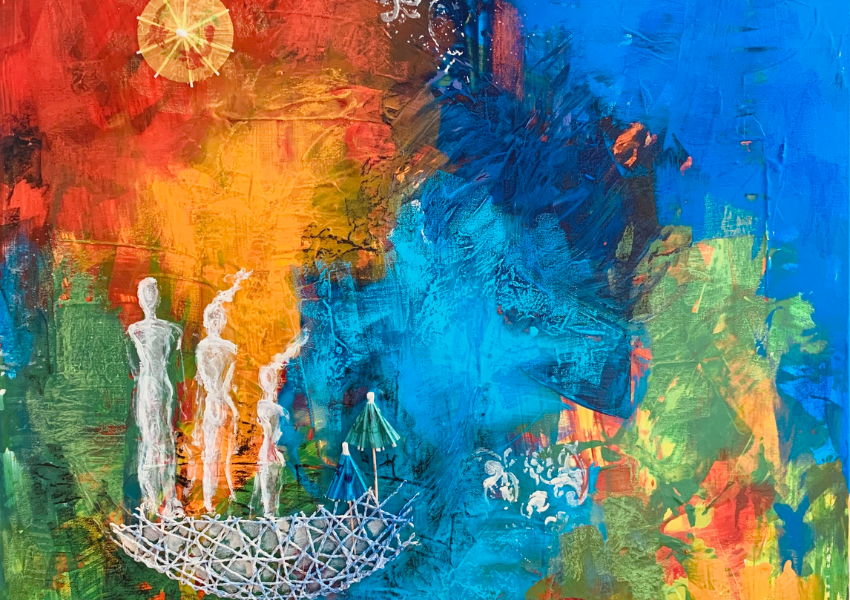
"The Journey II"
COURTESY SILVINA MIZRAHI
Silvina Mizrahi uses bold color and a whimsical approach to sculpture and painting to share her Sephardic Jewish culture. Her work is filled with emotion, joy, and true to the name of this exhibit, the Sephardic spirit.
Her 2023 solo show “Silvina Mizrahi: A Sephardic Spirit” was on display at Hebrew College in Fall 2024, and featured collages and sculptures that flowed through the halls of the campus.
We asked Silvina about the show, and this is what she shared:
In my artistic journey, sculpture has always been my primary medium; for many years, it was my sole focus. It wasn’t until I moved to Boston and experienced my first long, white winter that I began to explore painting as a way to bring color upfront.
For this particular exhibition, the paintings took precedent. I needed vibrant colors and rich textures to evoke the places embedded in my memories.
In my sculptures, the negative spaces formed by the shapes are just as important as the shapes themselves—both are essential elements of the composition. It’s similar to music, where the notes are as significant as the silences between them. Cutouts began to appear on my canvases as I sought ways to represent negative space in a two-dimensional setting. The purpose of this technique varies depending on what I aim to express. In some paintings, I use it as a tool to create depth, a surreal atmosphere that suggests multiple dimensions. In others, like Prayer in Blue, which I created in response to the attack on October 7, the cutout figures symbolize those who have passed away. Though their physical presence is gone, they remain a part of our lives—still present, still part of our ‘composition.’
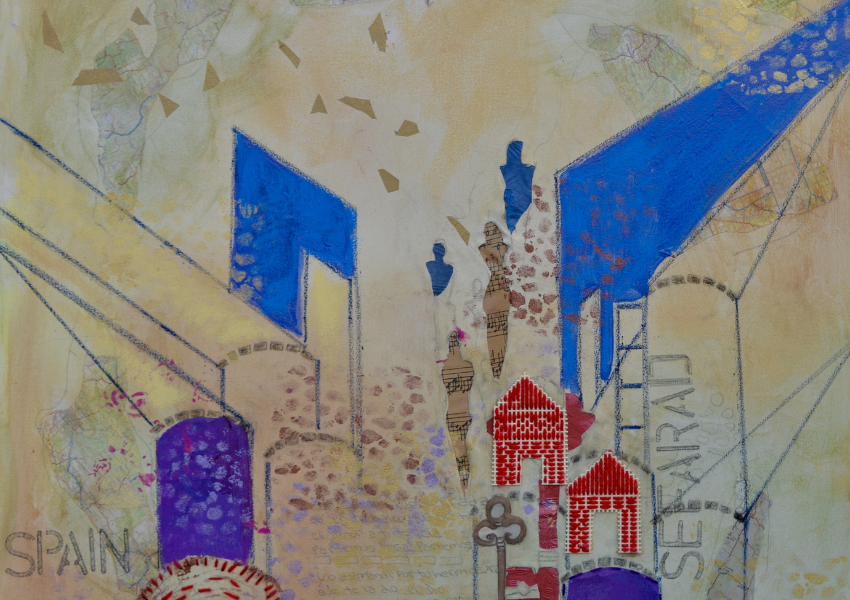
"The Keys of Spain I"
COURTESY SILVINA MIZRAHI
The piece that inspired this show is titled ‘Keys from Spain,’ which I created during the pandemic. For a long time, I’ve wanted to dig deeper into my roots and explore Sephardic history, but it was during this period that I finally found the time to do so. I began following various podcasts featuring live interviews that focused on Sephardic culture and traditions from around the world. It was during this time that my ideas began to flow about the topic.
Many of my stories are inspired by my family members, here are a few of those stories:
Mabramata y el dulce de naranjas / Mabramata and the Orange Jam
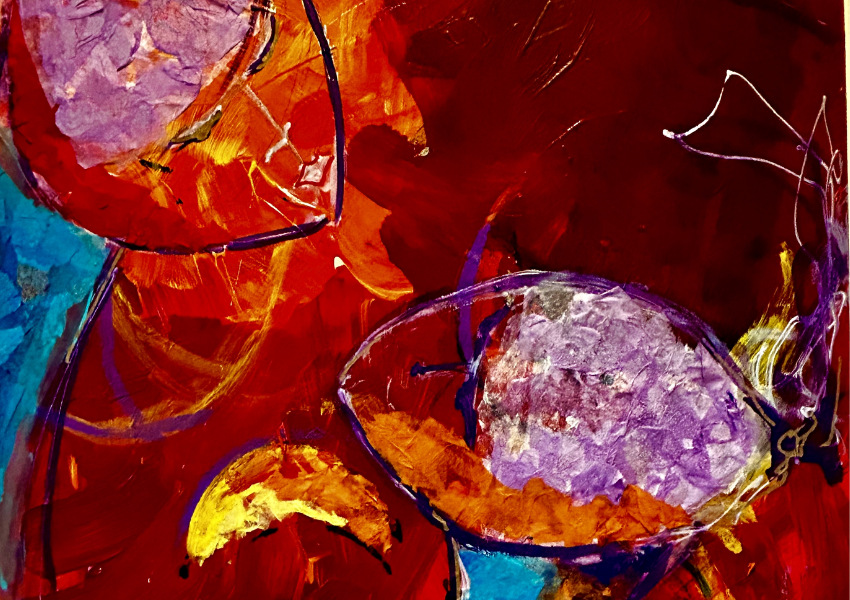
"Mabramata Dulce De Naranjas"
COURTESY SILVINA MIZRAHI
Mabramata is my grandmother’s last name, meaning “the one with dark eyes.” She used to make a delicious orange jam, using a generous amount of peels and spices. The process was time-consuming, as she had to reduce the peel’s acidity by tying them into a “pendant” and leaving them submerged in water under the sink overnight. I still have the original recipe and the special bowl in which it was served during special celebrations. Here, memories of Spain, food, and celebrations intertwine.
During the exhibition’s opening, we placed an infuser alongside the painting, releasing the scent of oranges to invite viewers to experience the artwork, not just visually, but also through scent, evoking memories.
Mizrahi and Leah’s Key
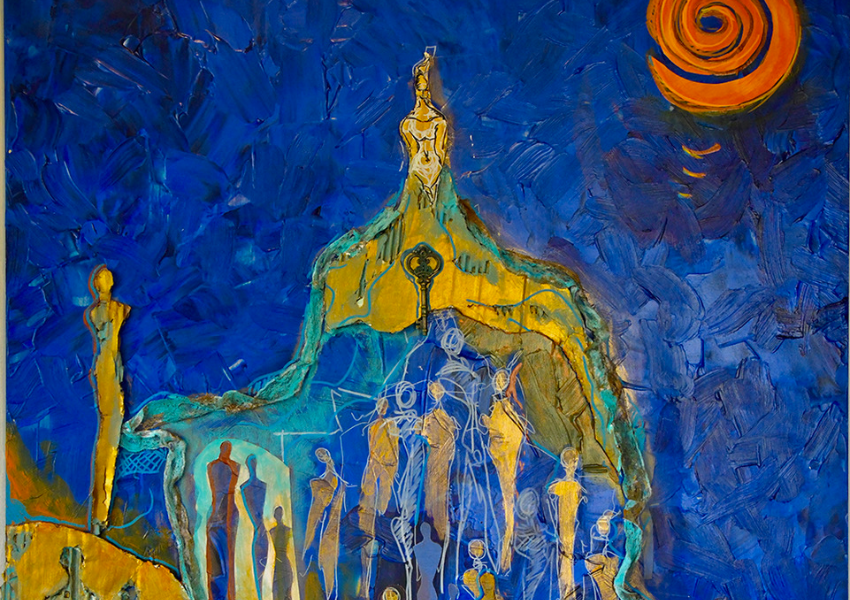
"The Mizrahi's and Leah's Key"
COURTESY SILVINA MIZRAHI
Leah was my grandfather’s mother, the first generation of Sephardic Jews who came to America from Istanbul, Turkey. The symbol of her key represents her role as the keeper of Sephardic traditions, planting the seed for new generations in America.
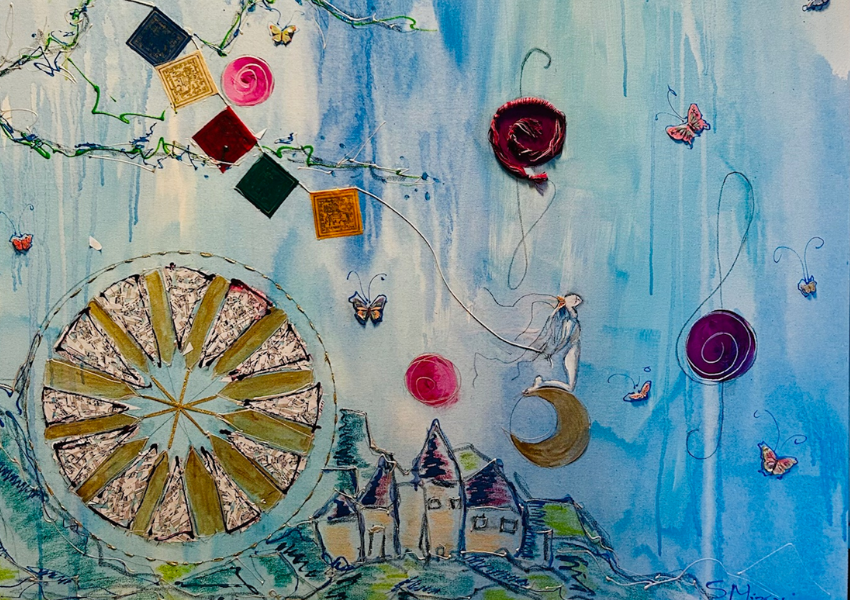
"Dalilah's Dream"
COURTESY SILVINA MIZRAHI
My daughter (Dalilah) is also a source of inspiration for many of my pieces (as in Dalilah’s Dream).
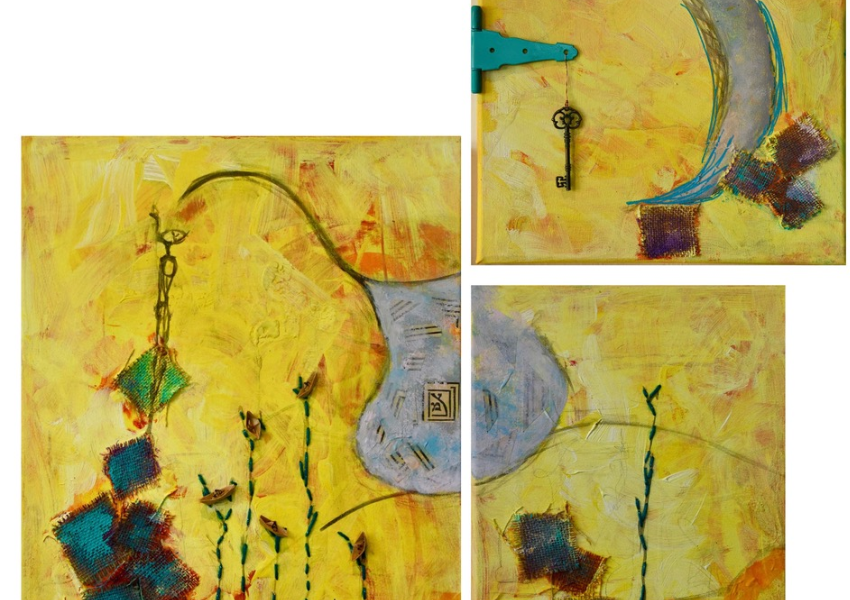
"The Vessel"
COURTESY SILVINA MIZRAHI
The Vessel piece was inspired by a Kabbalistic script discovered in the Middle Ages. Many elements danced in my mind as I painted. First, I thought of the places where Kabbalah flourished, such as Tzfat, Spain, and Morocco. Second, the symbolism of the vessel as both a receiver and a giver, a concept central to Kabbalistic teachings, influenced the work. The key became a symbol of hope and new possibilities, while the paper boat represented the idea of “oscillation”—a reminder that nothing is static and that we too should remain open to change.

"The Journey II"
COURTESY SILVINA MIZRAHI
The Journey began as a way to explore the concept of exile—both external and internal. External exile is something many families experience, as loved ones leave in search of new horizons and opportunities. Internal exile, on the other hand, involves leaving behind our old selves, stepping out of our comfort zones, and embracing the challenges of transformation. It is the journey of self-discovery and growth, allowing us to return renewed. The boat has myself, my husband and my daughter on it.
You can visit Silvina’s fall art exhibit at Hebrew College from now until December 20, 2024.
JArts’ mission is to curate, celebrate, and build community around the diverse world of Jewish arts, culture, and creative expression. Our vision is of a more connected, engaged, and tolerant world inspired by Jewish arts and culture.
Reflections
-
1.
How does Silvina’s work make you feel?
-
2.
What do you know about Sephardic culture? What does her work encourage you to want to understand more?
Want more?
Get curated JewishArts.org content in your inbox


